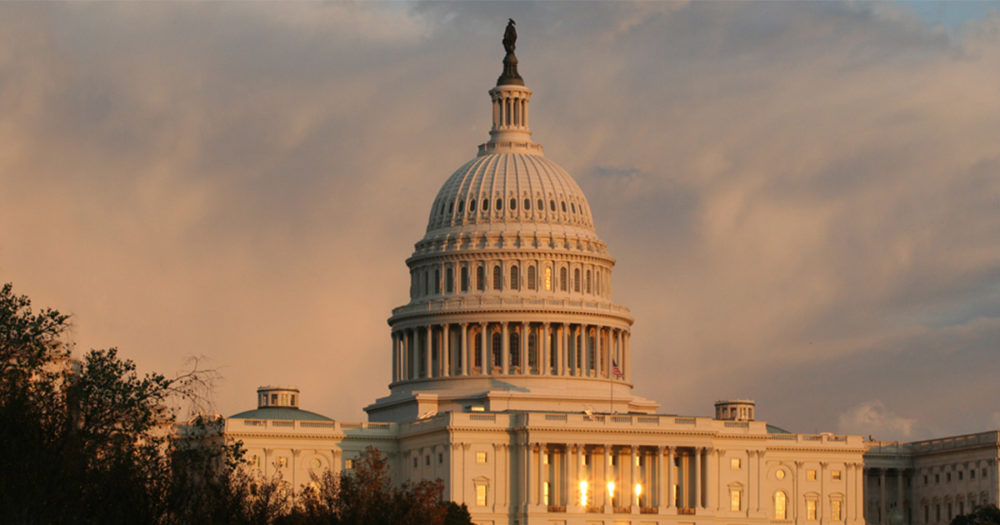 As calls for action on climate change become even louder across the globe (including here in the U.S.) and the impacts of climate change increasingly threaten our way of life, Congress still has a chance to do something right now to reduce greenhouse gas emissions and drive investments in clean energy technologies: extending and expanding tax credits for renewable energy and battery storage. And a new report by Rhodium Group puts some numbers behind this – showing that continued federal tax policy support for clean energy technologies accelerates clean energy deployment and leads to meaningful reductions in carbon emissions.
As calls for action on climate change become even louder across the globe (including here in the U.S.) and the impacts of climate change increasingly threaten our way of life, Congress still has a chance to do something right now to reduce greenhouse gas emissions and drive investments in clean energy technologies: extending and expanding tax credits for renewable energy and battery storage. And a new report by Rhodium Group puts some numbers behind this – showing that continued federal tax policy support for clean energy technologies accelerates clean energy deployment and leads to meaningful reductions in carbon emissions.
These policies work to drive investments in clean energy.
Tax incentives for clean energy technologies – along with local and state policies – work to decarbonize the power sector. The production tax credit and investment tax credit for wind and solar respectively are driving forces behind our progress to date.

Between 2000 and 2018 wind and solar grew from essentially zero to meeting more than eight percent of the nation’s energy demand (see figure at left). We must continue to accelerate this pace if we’re going to decarbonize our electricity sector over the coming decades. Maintaining tax policies that incentivize clean energy development are a key part of that effort.
Congress’s best opportunity to move the needle on clean energy.
Extending these policies and expanding them to make them more accessible for emerging technologies like offshore wind and battery storage is far and away the most important opportunity in this Congress to move the needle on reducing greenhouse gas emissions from the power sector while spurring billions of dollars in investment and continuing to grow some of the nation’s most promising industries. This should not be a partisan issue – it’s truly a win-win-win for the economy, public health, and the environment.
Rhodium Group’s new analysis backs this up. The study finds that extending the investment tax credit for solar and the production tax credit for wind enable these technologies to continue the impressive growth trajectory that we’ve seen over the past several years.


Extending clean energy tax credits through 2025 would drive between 31 and 97 gigawatts of additional wind and solar energy above business-as-usual through 2030 (one gigawatt equals 1,000 megawatts).
This leads to reductions in annual carbon dioxide emissions of as much as 187 million metric tons. The large bands of possible results in the figures above highlight the fact that tax policy is only part of the solution – factors such as future natural gas prices have a significant impact on the results.
A huge opportunity for emerging technologies like offshore wind and battery storage.
Tax policy also offers an opportunity to provide certainty to emerging markets for offshore wind and battery storage. Making the investment tax credit available to offshore wind through 2025 would provide certainty to an industry that is just now ramping up. More than 20,000 megawatts of offshore wind are in the works along the east coast of the U.S. – from Virginia to Maine – representing a supply chain of $70 billion. These projects are a huge economic and carbon-reduction opportunity, and it is absolutely Congress’s role to provide the tax incentives that will attract this investment.
Meanwhile, battery storage is on the cusp of playing a significant role in our clean energy transition. Pairing renewable energy with battery storage will enable deep penetration of renewable energy while improving the reliability, resiliency, and cost-effectiveness of our transition to clean energy. States like Iowa and North Carolina – national leaders in wind and solar deployment respectively – are just now starting to invest in battery storage projects that will enable the next wave of renewable energy investments.
Updating our clean energy tax policies is progress worth making.
To be blunt – we cannot afford to pass up an opportunity to spur investments in clean energy, reduce carbon emissions, and support these growing industries. Ways and Means leadership has promised to move a clean energy tax package and is working with Committee members and others to pull that together. With few congressional work weeks left before the end of the session congress will need to make these tax incentives a high priority to get them over the finish line. Passing clean energy tax incentives is real climate leadership. We simply can’t miss this opportunity.

